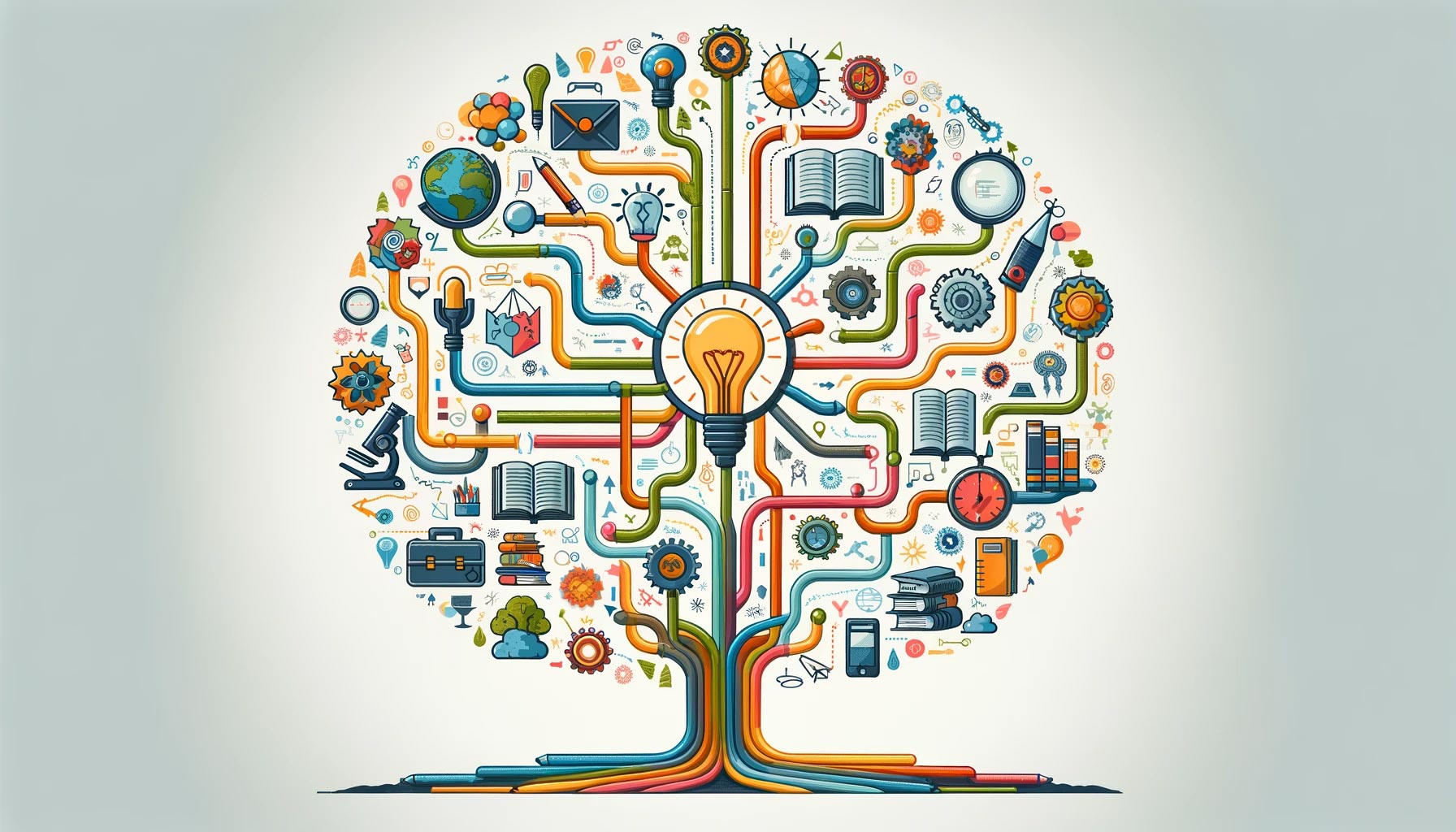
Benefits of Mind Maps in Education - Enhance Learning
In the domain of education, fostering an environment that enhances learning, stimulates creativity, and supports memory retention is paramount. Mind maps, a dynamic and visual learning strategy, have emerged as a cornerstone in achieving these educational objectives. This comprehensive exploration delves into the multifaceted benefits and applications of mind maps in educational settings, spotlighting their role in transforming teaching methodologies and enriching students' learning experiences.
Understanding Mind Maps
Mind maps are a form of visual learning tool that organizes information around a central subject using colors, images, and connections. They reflect the brain's natural inclination towards making associations, thereby facilitating deeper cognitive processing. This method is beneficial for brainstorming, planning, studying, and problem-solving, making it a versatile tool in education.
The Science Behind Mind Maps
Research underscores the effectiveness of mind maps due to their alignment with cognitive learning strategies. They tap into the brain's capability to process visual information faster than text, enhancing memory retention and recall. By employing visual aids in teaching, educators can promote a more engaging and efficient learning experience.
Enhanced Memory Retention
Mind maps improve memory retention by leveraging the power of visual aids and association. By visually structuring information, students can form meaningful connections between concepts, aiding in longer-term memory storage and easier retrieval.
Stimulating Creativity
The use of colors, images, and branches in mind maps stimulates the brain's creative centers. This creativity stimulation encourages students to think outside the box and generate innovative ideas, making learning an explorative and enjoyable process.
Improved Organizational Skills
Organizing information through mind maps helps students understand relationships between different concepts, fostering analytical thinking and better organizational skills. This clarity is particularly beneficial in complex subjects, where understanding hierarchies and connections is crucial.
Enhanced Learning Outcomes
Integrating mind maps into teaching strategies can lead to enhanced learning outcomes. They support various cognitive processes, such as understanding, analysis, synthesis, and evaluation, which are essential for comprehensive learning.
Practical Applications in Education
Mind maps have practical applications across all educational levels and subjects. They can be used for:
- Note-Taking: Transforming linear notes into mind maps can help students identify key concepts and their interrelations, making review sessions more productive.
- Brainstorming: Whether planning a project or starting a research paper, mind maps facilitate the generation of ideas and their organization.
- Study Aids: Mind maps can summarize entire chapters or topics, making them excellent study aids for exams.
- Project Planning: For group projects, mind maps offer a clear structure for task division, timelines, and objectives.
Tools and Software for Creating Mind Maps
Advancements in technology have led to the development of various mind mapping software and tools designed to cater to different needs. These tools, ranging from simple to advanced, allow users to create customizable mind maps that can be shared and edited collaboratively. Popular options include MindMeister, XMind, and Coggle, each offering unique features such as templates, collaboration options, and integration with other educational tools.
Implementing Mind Maps in the Classroom
Educators looking to incorporate mind maps into their teaching strategies should consider the following:
- Introduce the Concept: Start with a simple introduction to mind maps, including their benefits and how to create them.
- Encourage Experimentation: Allow students to experiment with different styles and uses of mind maps to discover what works best for them.
- Incorporate Technology: Utilize mind mapping software to facilitate collaboration and make the process more engaging.
- Assign Mind Mapping Tasks: Integrate mind mapping into assignments to encourage the practical application of this tool.
Conclusion
Mind maps are more than just an educational tool; they are a pathway to enhanced learning, creativity, and organizational skills. By visually organizing information, they tap into the brain's natural processes, making learning both effective and enjoyable. As educators and students alike seek to improve educational outcomes, the adoption of mind maps presents a compelling avenue to achieve these goals. Encouraging the use of mind maps in education not only supports academic success but also prepares students with skills essential for their future endeavors.
Mental Health Education

